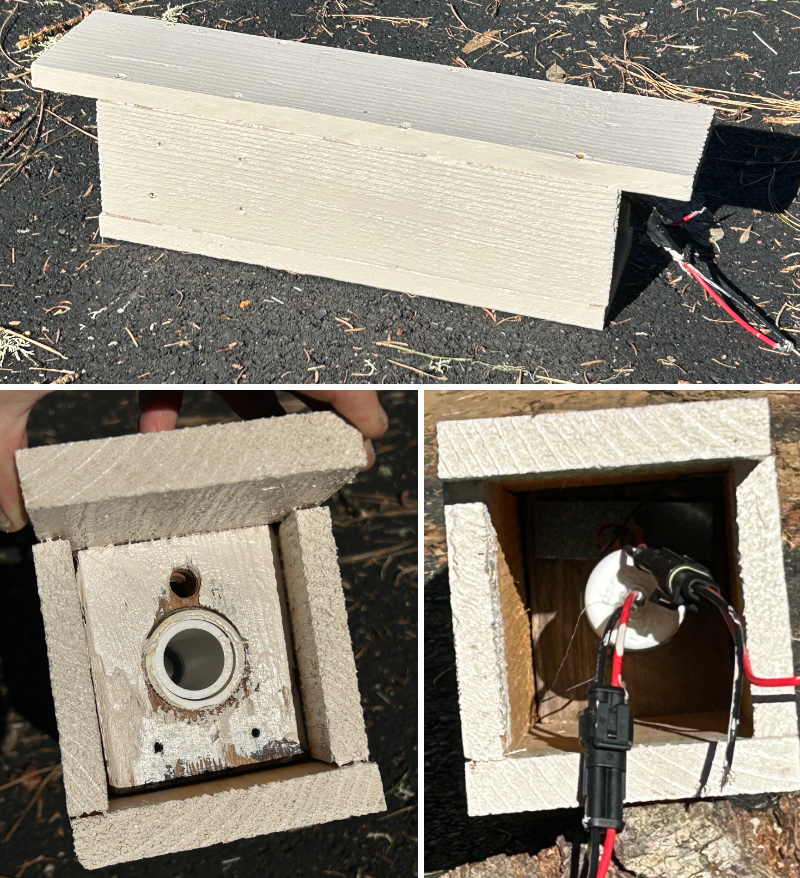March 23rd, 2025
I had tried various infrared motion detection sensors to trigger the gargoyle when a car comes, but they suffered from problems. Deer would trigger them. Sometimes a car wouldn’t trigger them. Electric vehicles NEVER triggered them, because they don’t get hot enough to radiate any infrared radiation. I needed something better.
I had considered the possibility of using some kind of light sensor to detect the motion, but the problem was always that such a sensor would need a transmitter on one side of the road and a receiver on the other side of the road. This meant that, no matter what, I would need to set up wires to get power across the road. That problem always seemed insuperable.
But then I had one of those “You snivelling fool!” moments when I realized that there was a simple solution: a corner cube reflector. This is a simple optical device that bounces a beam back in exactly the same direction from which it came. There are lots of snazzy optical corner cubes on the market, but there are also simple plastic versions:
These would reflect any light well. If I used a red laser beam, they would do a sensational job reflecting it back. So all I needed was
1. A place to put the reflector
2. A laser on the other side of the road aimed directly at the reflector
3. A light sensor that could detect the reflected light.
Here’s what I came up with:
The laser shoots its beam down the aluminum tube, the purpose of which is only to align the laser in exactly the same direction that the telescope is pointed. The telescope has a small field of view, so it sees only a small region; this minimizes noise and visual clutter.
Here are some photos of one of the two laser-telescopes:

The value of the telescope becomes clear when you compare the plain view with the telescope’s view:

With the telescope, the photocell gets a stronger signal unsullied by noise.
